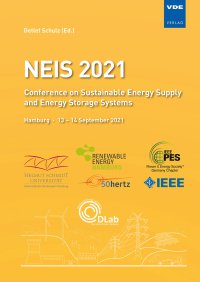Comparison of Best Practices for Evaluation of New Power Line Connections in Automated Power Systems Planning
Konferenz: NEIS 2021 - Conference on Sustainable Energy Supply and Energy Storage Systems
13.09.2021 - 14.09.2021 in Hamburg, Deutschland
Tagungsband: NEIS 2021
Seiten: 6Sprache: EnglischTyp: PDF
Autoren:
Hofmann, Martin; Franz, Moritz; Stetz, Thomas (University of Applied Sciences Gießen, Gießen, Germany)
Hajdu, Martin (Mittelhessen Netz GmbH, Gießen, Germany)
Inhalt:
In strategic electrical power systems planning, defining new power line routes is a complex task. The preferred solution has not only to comply with voltage and current constraints under given load scenarions, but also to avoid unnecessary high investment costs due to a non-optimal routing. This paper aimes to improve automated power systems planning processes with regard to more accurate planning assumptions for new power line routes while maintaining short runtimes for the program execution. It compares two common techniques for evaluating new power line routes. One technique is based on a rule of thumb approach for estimating the power line length and thus the investment costs along with technical parameters. Another technique is based on a detailed spatial analysis of the surrounding terrain using Dijkstra's algorithm. It is shown for the first time, that this technique is also applicable on distribution grid level with a raster dataset of 1 mý resolution. The accuracy of both techniques is compared against each other through the results of a case study, since no benchmark scenario for the evaluation exists. The investigation shows that a route planning algorithm that takes environ-mental data into account is generally preferable to the rule of thumb approach, if appropriate GIS data are available.


